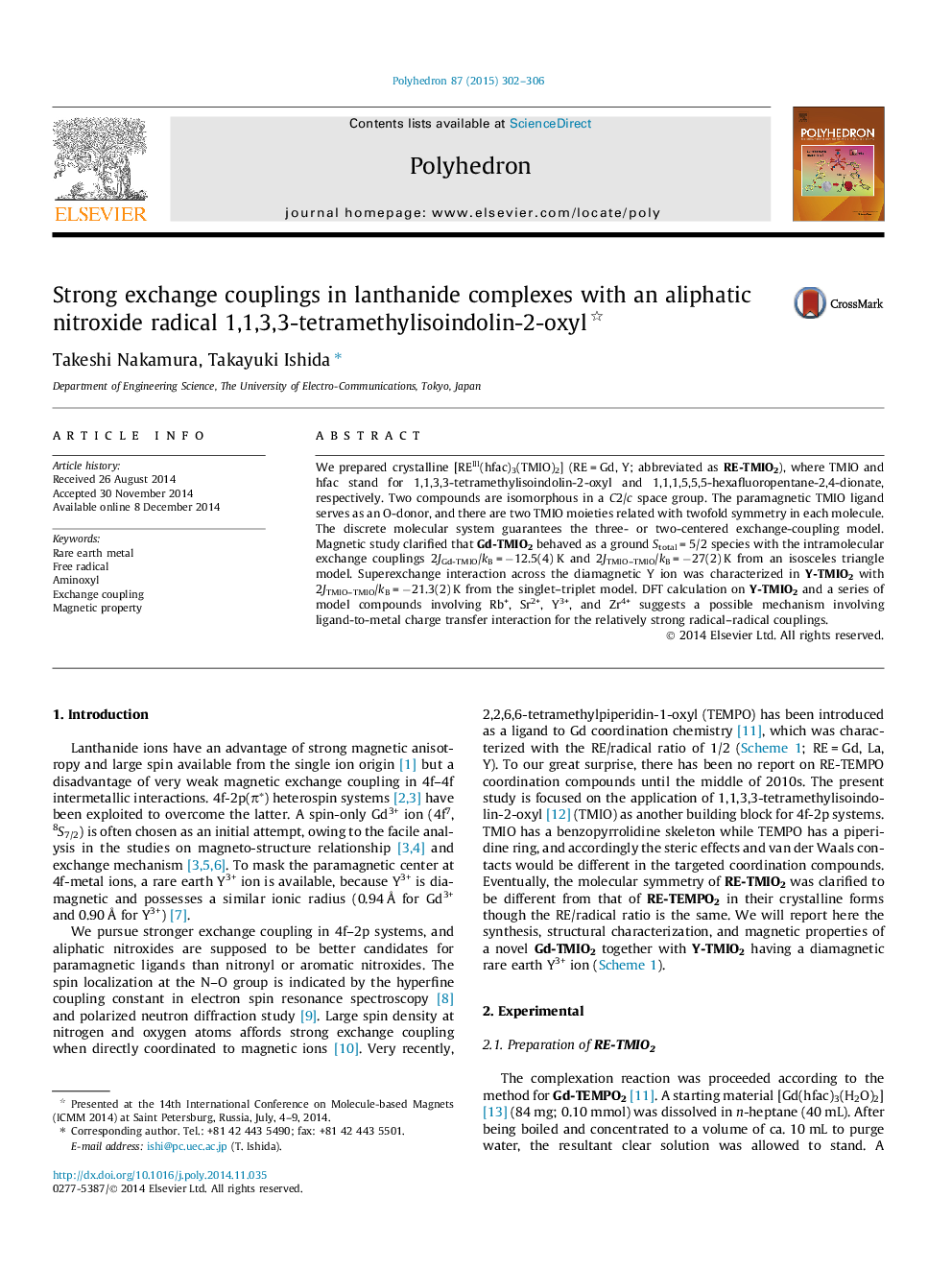| Article ID | Journal | Published Year | Pages | File Type |
|---|---|---|---|---|
| 1337370 | Polyhedron | 2015 | 5 Pages |
We prepared crystalline [REIII(hfac)3(TMIO)2] (RE = Gd, Y; abbreviated as RE-TMIO2), where TMIO and hfac stand for 1,1,3,3-tetramethylisoindolin-2-oxyl and 1,1,1,5,5,5-hexafluoropentane-2,4-dionate, respectively. Two compounds are isomorphous in a C2/c space group. The paramagnetic TMIO ligand serves as an O-donor, and there are two TMIO moieties related with twofold symmetry in each molecule. The discrete molecular system guarantees the three- or two-centered exchange-coupling model. Magnetic study clarified that Gd-TMIO2 behaved as a ground Stotal = 5/2 species with the intramolecular exchange couplings 2JGd-TMIO/kB = −12.5(4) K and 2JTMIO–TMIO/kB = −27(2) K from an isosceles triangle model. Superexchange interaction across the diamagnetic Y ion was characterized in Y-TMIO2 with 2JTMIO–TMIO/kB = −21.3(2) K from the singlet–triplet model. DFT calculation on Y-TMIO2 and a series of model compounds involving Rb+, Sr2+, Y3+, and Zr4+ suggests a possible mechanism involving ligand-to-metal charge transfer interaction for the relatively strong radical–radical couplings.
Graphical abstractWe prepared [REIII(hfac)3(TMIO)2] (RE-TMIO2). Magnetic study clarified that Gd-TMIO2 behaved as a ground Stotal = 5/2 species with the intramolecular exchange couplings 2JGd-TMIO/kB = −12.5(4) K and 2JTMIO–TMIO/kB = −27(2) K. Superexchange interaction across the diamagnetic Y ion was characterized in Y-TMIO2 with 2JTMIO–TMIO/kB = −21.3(2) K.Figure optionsDownload full-size imageDownload as PowerPoint slide
